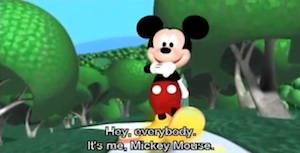English historical monuments
In the subject of English focuses on the four skills, should also motivate students to learn about the culture and history of the country.
I have chosen several websites where information on several important monuments in the UK, so that throughout the course students seeking information and individually expose you to their classmates, in order to know not only the language but also the country.
The students can expose this work in many ways, making a power point, making sketches, drawings, even a model of what will expose.


An exemple:




The ten most important buildings in England.
The head of English Heritage picks the 10 buildings that have changed the face of the country.
Architecture: the best and worst of 2013.
From a gloriously refurbished Tate Britain to the glaringly unloved 'Walkie-Scorchie', Ellis Woodman chooses his five best and five worst works of architecture in 2013.
Historic Buildings in London
Explore the best historic buildings in London for free with The London Pass!
Historic sights included on the London Pass are world famous 'must sees' such as the Tower of London, Windsor Castle, Kensington Palace, Tower Bridge and many more landmarks that are certain to fascinate any visitor.
Visiting London is an unforgettable experience and there is a true breadth of history going back hundreds of years. Round almost every corner there are landmark sights with their own story, and architectural style.
Paying a visit to many historic places would normally be expensive, but whilst you are here you really shouldn’t pass on London greatest landmarks. The London Pass will guide you round everything you wish to see with free entry and fast track admission at so many amazing sights.
England is a land of ancient cities, royal palaces, massive cathedrals, and legendary sites. Mighty castles, stately homes, glorious gardens, and tiny picturesque villages enhance the natural beauty of the countryside.
Reflecting a wealth of myriad influences, the Historic Sites in England are as diverse as this island nation's history.
Indeed, the country we know today as England has witnessed the rise and fall of many cultures, civilisations and empires. From pre-historic peoples to Celtic tribes, Roman conquerors and Anglo-Saxon and Norman invaders, England is a country forged of many influences.
The rise of the English state and its eventual transformation into the United Kingdom has also ensured that many remarkable historic sites remain to remind us of the diverse story of the country.
Today, the historic sites of England range from the most famous and popular tourist destinations - such as Buckingham Palace, Stonehenge and Windor Castle - to lesser-known and often hidden sites well off the standard visitor trails.
In reality, there’s a huge selection of historic sites in England and you can plan some great things to see on your trips by browsing our list. Once you’ve explored the historic sites of England you can use our itinerary planner tool to plan out your trip and then print off a free pocket guidebook and use it when visiting your favourite historical places in England.
Our database of English historic sites is growing all the time, but we may not cover them all. Remember, if you know of other historic sites in England, you can always add them to Historvius now by visiting our uploadpage.






































